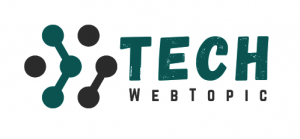The current work environment is evolving rapidly, impacting how and where we work. As society acknowledges the need for inclusive and safe spaces that cater to individuals of all abilities and backgrounds, workplaces are also adapting to these changes.
The post-pandemic era has seen a significant increase in remote work, leading to unexpected transformations. One favorable outcome is the widespread implementation of tools and technologies that enhance accessibility for all team members.
To leverage technological advancements and create a more inclusive workplace, consider these key points.
Select Quality Audio and Video Hardware
Using top-quality AV equipment can greatly enhance the accessibility of work meetings for many members of the team. Low-quality audio can create difficulties for those who are hearing impaired and have trouble perceiving spoken language. Alternatively, poor video quality can make it more difficult for individuals who depend on lip-reading to understand others’ speech.
Using the right technology in your conferences can go a long way in increasing the sense of inclusivity in your work environment. Encouraging employees to use quality headphones or earbuds during conferences will also help improve the meeting quality for others.
Ensure System Compatibility
Choosing quality audio and video equipment is only half the battle. You must make sure that your hardware and software are compatible with each other. This is crucial as system integration issues can lead to disruptions, reduced efficiency, and employee frustration.
When shopping for a new video conferencing system, take the time to learn whether the hardware is compatible with the software platform you use. For instance, if you use Microsoft Teams for collaboration, it’s best to opt for Microsoft Teams conference room equipment to ensure seamless system integration and performance.
Provide Live Captions and Transcripts
New features like live captions and transcripts allow individuals with disabilities or in loud environments to keep up with meetings as they’re happening. Additionally, if an organization has a team that spans countries, these features can also aid non-native speakers in better understanding the discussions.
Many video conferencing platforms come equipped with these features. In addition to saving meeting recordings for future reference, these features extend to meeting transcripts, enhancing accessibility for team members who may need to review discussions later.
Design Inclusive Environments

When creating an online meeting area, it’s helpful to consider how the features you incorporate will impact accessibility. For example, compatibility with screen readers, keyboard shortcuts, and the ability to adjust text size on the screen may be useful.
By preparing your meeting with accessibility features and teaching your team to use them, you can create an inclusive environment for every member.
Get the Team Involved
Many platforms include functions that enable you to increase engagement with members of your team. With pools, Q&A sessions, and themed chats, you can provide easier ways to participate for team members who are hesitant to speak up.
This serves two purposes: increasing engagement and collaboration in your team environment and creating a sense of accessibility and inclusivity for team members who have difficulties.
Teach Them to Use It
It’s not enough to just make new technologies available. It’s important to make sure that your team is well-trained and ready to use these tools whenever they need them. Make sure your team can take advantage of new technologies by holding training sessions and offering support as needed.
To help team members feel more connected to the need for inclusivity, your organization can inspire them by sharing stories of how this technology has helped others, as well as by sharing articles about how inclusive design benefits everyone.
Be in the Know
Keeping up to date with the latest trends in work technology can help ensure that your organization is following the best practices for accessibility and inclusivity. With technology constantly improving, being aware of and implementing new features as they become available can significantly contribute to equity in the workplace.
Overall, it takes a lot of work and awareness to successfully organize an accessible meeting.
While high-quality video and audio equipment are an important factor, they’re not everything. You’ll also need to implement accessibility tools and teach your team to use them. With a little effort, you can create an inclusive work environment for every member of your team.


